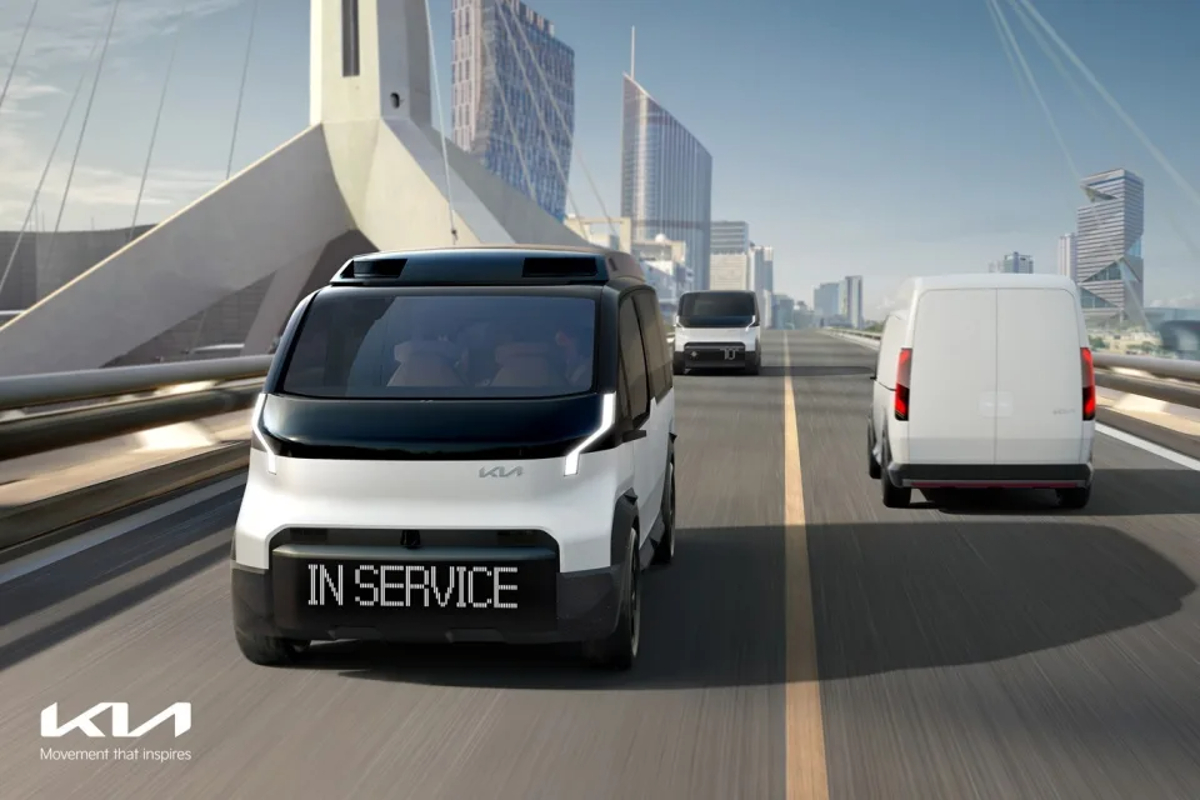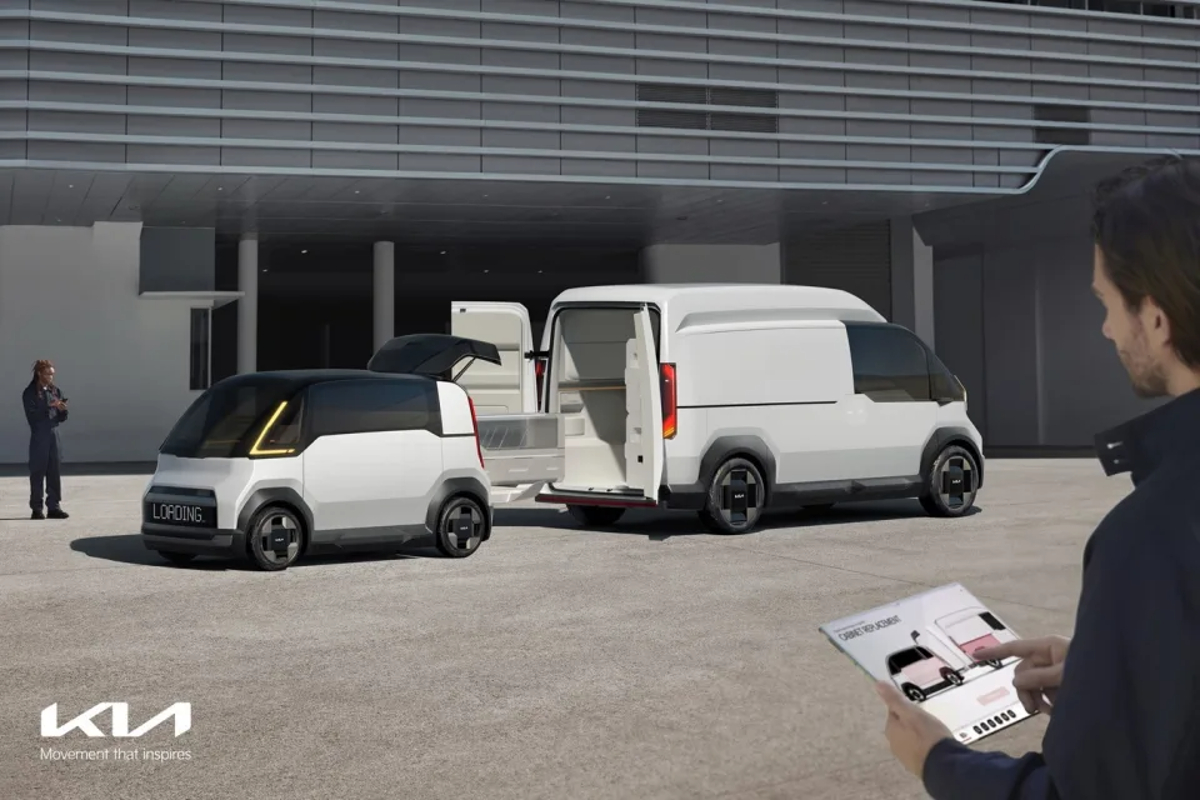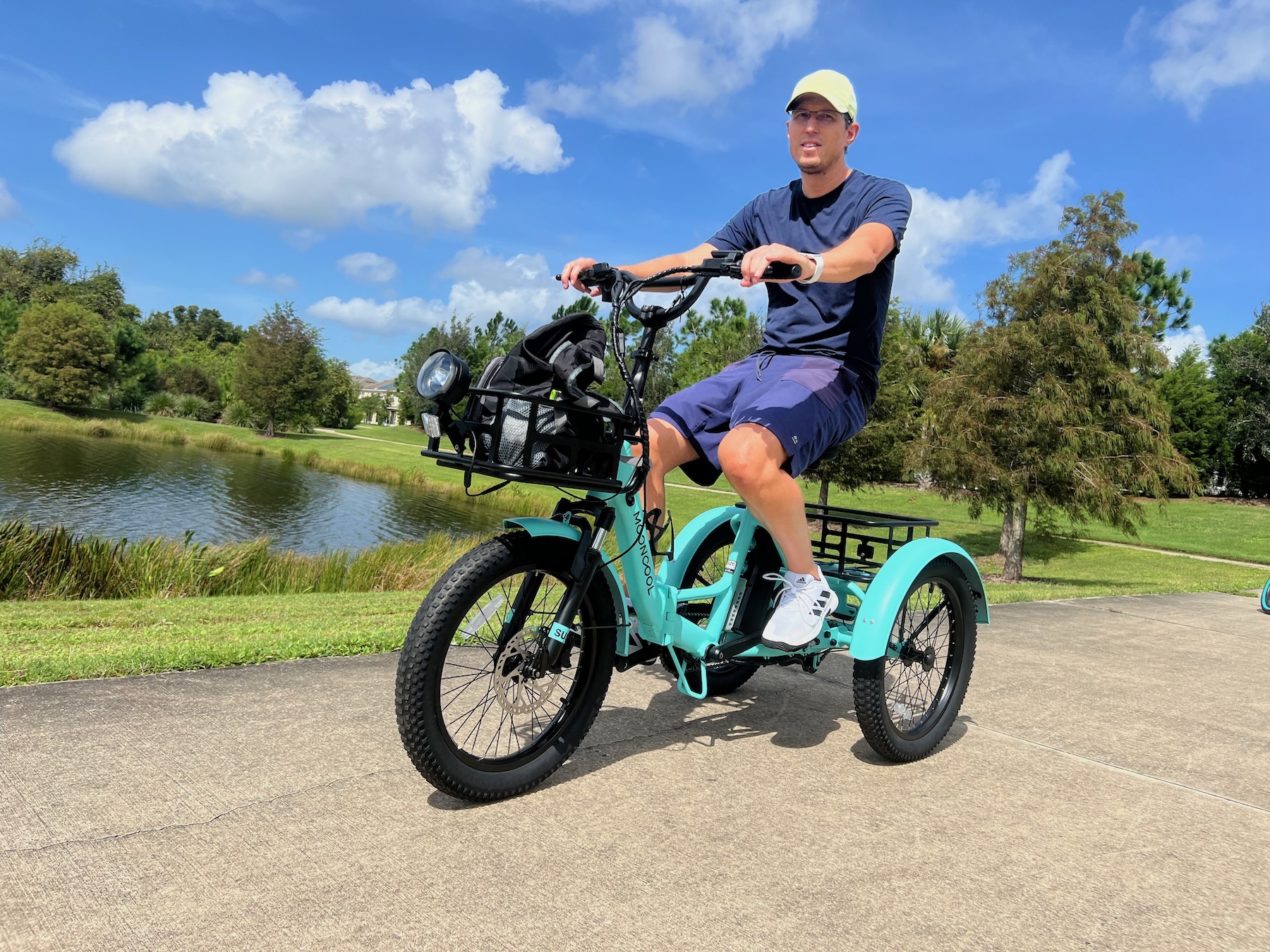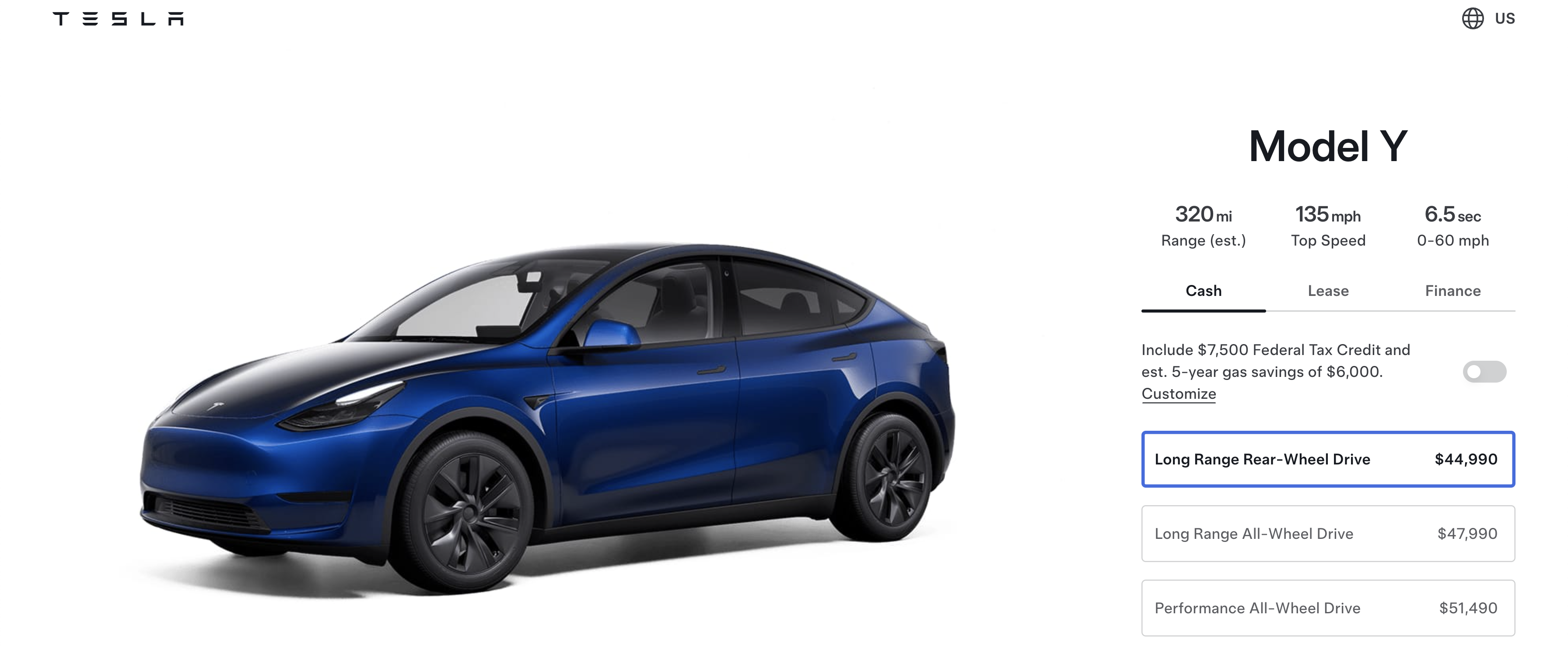Sign up for daily news updates from CleanTechnica on email. Or follow us on Google News!
After a five year absence, Kia was back in a big way at CES 2024, where it introduced its Platform Beyond Vehicle lineup. Kia PBVs are intended to be a total mobility solution that combines fit-for-purpose EVs with advanced software solutions based on the Hyundai Motor Group’s software-to-everything, or SDx, strategy. In a press release, Kia said each Kia PBV is designed to open the door to new businesses and lifestyles by redefining the concept of space thanks to advanced, tailored interiors that provide freedom and flexibility.
“Kia’s PBV business represents our vision of going beyond the traditional concept of automobiles by fulfilling the unmet needs of diverse customers and communities through optimized vehicles and services catering to specific market and business circumstances,” said Ho Sung Song, Kia president and CEO.
Kia provided no technical details about its PBV vehicles. They will come later if the company decides to move forward with the PBV program. It did say that each of the five PBV concept cars it showed at CES this year is intended to enhance versatility and cater to the needs of businesses and individuals. The PBV platform offers users a blank canvas to redefine how space and mobility can adapt to their needs by providing exceptional flexibility through radical modularity, it said.
Kia Three Phase Plan For PBVs
Moving forward, the company has a three part plan to implement its PBV strategy. In phase one, the company plans to introduce the PV5, a versatile EV optimized for ride hailing, delivery services, and utilities. Enhanced data connectivity between vehicles and external data such as route or delivery information is intended to enable convenient operation of multiple vehicles as a software-defined fleet.
In phase two, Kia expects the PBV program to evolve into AI based mobility platforms that use data to interact with users and help keep vehicles updated. An integrated PBV solution can help provide a customized, seamless experience across devices and software. In phase three, PBVs are expected to evolve into highly customizable, bespoke mobility solutions by integrating with future mobility ecosystems.
Interchangeable Body Components
 The design strategy is to enable a single vehicle chassis to be used to fulfill multiple mobility needs. Behind a fixed cab, or ‘driver zone’, a variety of interchangeable upper bodies, or ‘life modules’, can be connected to the base vehicle via a hybrid electromagnetic and mechanical coupling technology, turning the PBV into a taxi during the day, to a delivery van at night, and a personal recreational vehicle on weekends (assuming one has the space to store multiple bodies and the financial resources to purchase them.)
The design strategy is to enable a single vehicle chassis to be used to fulfill multiple mobility needs. Behind a fixed cab, or ‘driver zone’, a variety of interchangeable upper bodies, or ‘life modules’, can be connected to the base vehicle via a hybrid electromagnetic and mechanical coupling technology, turning the PBV into a taxi during the day, to a delivery van at night, and a personal recreational vehicle on weekends (assuming one has the space to store multiple bodies and the financial resources to purchase them.)
The weldless body structure assembly is designed to enable all moveable components to be adjusted according to the need of the owner. Shipped in standardized, convenient kit form, Dynamic Hybrid technology is intended to allow for the quick and simple in-field transformation of a PV5. Kia’s mission is to design PBVs that are easy and intuitive to operate and engage with, regardless of where, when or how they are used.
A combination of a simple yet robust surface language combined with expressive graphics seamlessly unifies the four Concept PV5 models, despite their diverse natures. On each vehicle, large doors open out to reveal an exceptionally wide opening with no pillars that provides easy ingress and egress. Inside, the extended wheelbase and electric platform provide wide, flat open spaces to offer multiple storage and usage options.
The PV5 is expected to be offered in four configurations — basic, van, high roof, and chassis cab. In the future, Kia also plans to introduce a Robotaxi model developed with Motional (a joint venture between Hyundai Motor Group and Aptiv), which aims to provide a revolutionary autonomous hailing experience for passengers.
That chassis cab configuration is interesting. Slide a load bed in behind the cab and “Voila!” A midsize electric pickup truck! Since the company says the starting price for PBV vehicles is $35,000, that could mean a very affordable light duty battery powered pickemup is in the offing as soon as next year. Or not. “The PV5 pickup truck is not fixed yet,” Ho Sung Song told The Drive. “This is just one example of a model based on the chassis cab model. The pickup is just one of these varieties of the PV5 chassis cab model. It’s not fixed yet, but we can try.”
Kia PV7 And PV1
In phase two of the PBV program, Kia intends to introduce two other models. The PV7 will have more interior space and a longer driving range while the PV1 will be designed for agile, short distance logistical transportation in a vehicle that minimizes turning radius even in narrow spaces.
All Kia PBV vehicles will feature a high degree of modularity. An integrated rail system on the vehicle’s ceiling, floor, and side panels, as well as on the exterior, will enable customization of each vehicle to meet individual customer needs. This system is designed to enable the seamless transfer of goods and items between vehicles, using cabinets and frames. The rails simplify the movement of items between vehicles, while the modular design of the tiles’ and functional accessories, such as speakers and shelves, offer limitless flexibility for a wide range of scenarios.
“Kia PBVs will initiate a new era of seamless everyday business and lifestyle solutions. We hope to make our customers’ lives easier and better, whether they’re stationary or on the move, offering exceptional flexibility and customization through radical modularization,” said Karim Habib, Executive Vice President and Head of Kia Global Design.
The company is taking significant steps to meet the diverse demands of customers by constructing a dedicated PBV assembly plant in Autoland Hwaseong, Korea. This factory will implement a hybrid production approach, combining conveyor and cell based methods. Through collaboration with global conversion partners, Kia will be able to offer conversion models for various PBV line-ups, catering to different customer preferences. The factory is scheduled to become operational in 2025 and is expected to have an annual capacity of 150,000 units.
Attentive readers may make a connection between that highly automated and a new factory for purpose built vehicles opened recently by Hyundai in Singapore that uses several Boston Dynamics robots to manage the manufacturing process. That factory will build some Ioniq 5 cars equipped to be robotaxis.
The Kia fleet management solution for PBVs will be designed to allow fleet owners to oversee multiple vehicles, providing insights on sales, inventory, and deliveries in real time. Features may include inventory monitoring, temperature control, and intelligent route planning. The company intends to provide a total energy solution by utilizing advanced charging technology that allows the batteries that power the vehicles to also power mobile devices and emergency equipment through innovations like Vehicle-to-Everything (V2X) systems.
“The Kia PBV business is the pinnacle of our customer-centric business approach. With the aim of developing PBVs and solutions tailored to their business environments, we are confident that these strong partnerships will be a driving force on the road to becoming a sustainable mobility solutions provider,” said Pierre-Martin Bos, the director of PBV solutions.
The Takeaway
What is not being said out loud is the the Kia PBV concepts are very similar in design and customize-able features to the electric vehicles from Canoo. At one time, Hyundai/Kia seriously considered a business relationship with Canoo, but after an extensive amount of due diligence decided to back out of any future cooperation. The Kia offerings may be somewhat prettier than the vehicles from Canoo but one has to wonder to what extent one influenced the other.
In any event, Kia certainly has a bold vision of the future of mobility in the electric vehicle era. When we cast an eye on all the players in the automotive space today, Hyundai Motor Group seems to be one company that will survive the changeover from combustion engine cars to battery operated cars. We will be curious to see which, if any, of the PBV vehicles actually make it into production and which countries they will be sold in. Such a fascinating time to be in the car business.
Have a tip for CleanTechnica? Want to advertise? Want to suggest a guest for our CleanTech Talk podcast? Contact us here.
Our Latest EVObsession Video
I don’t like paywalls. You don’t like paywalls. Who likes paywalls? Here at CleanTechnica, we implemented a limited paywall for a while, but it always felt wrong — and it was always tough to decide what we should put behind there. In theory, your most exclusive and best content goes behind a paywall. But then fewer people read it!! So, we’ve decided to completely nix paywalls here at CleanTechnica. But…
Thank you!
CleanTechnica uses affiliate links. See our policy here.




